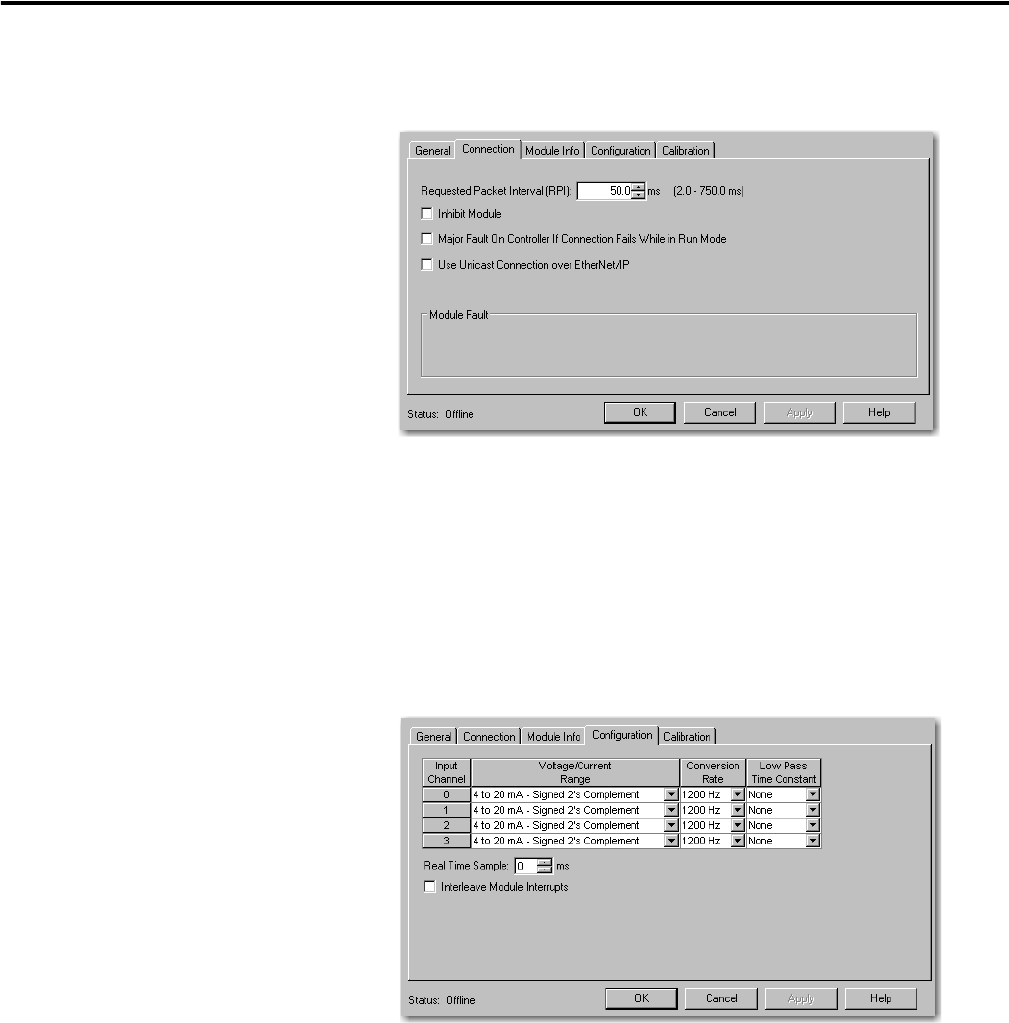Owner manual
Table Of Contents
- 1794-UM066A-EN-P FLEX I/O Dual Port EtherNet/IP Adapter Modules User Manual
- Important User Information
- Preface
- Table of Contents
- 1 - Overview of FLEX I/O and Your Redundant EtherNet/IP Adapter Module
- Overview
- The FLEX I/O System
- Adapter Features
- Types of Adapters
- Hardware and Software Compatibility
- What the Adapter Does
- Use of the Control and Information Protocol (CIP)
- Understanding the Producer/Consumer Model
- Specifying the Requested Packet Interval (RPI)
- Support of Rack Optimized and Direct Connections
- Chapter Summary
- 2 - Install Your FLEX I/O Adapter
- 3 - Configure the Adapter for Your EtherNet/IP Network
- 4 - Rack Optimized Discrete I/O
- 5 - Analog I/O with Direct Connection
- A - Interpret Status Indicators
- B - Specifications
- C - Configure the RSLinx Ethernet Communication Driver
- D - Adapter Web Dialogs
- Index
- Back Cover

Publication 1794-UM066A-EN-P - February 2012
Analog I/O with Direct Connection 41
5. On the Connection tab, adjust the Requested Packet Interval (RPI) to
meet your system requirements.
For this example you can leave it at the default 50 ms rate.
This RPI is used for the direct connection to this analog module.
The two rack connected digital I/O modules continue to communicate at
the RPI of the rack connection.
6. Click Apply to save the configuration.
7. On the Configuration tab, use the pull-down list to set the
Voltage/Current Range for Channel 0 to 0 to 10V – Binary.
This range allows you to easily monitor the output with a voltmeter when
you test the application.
Leave the other channels at their default values.










